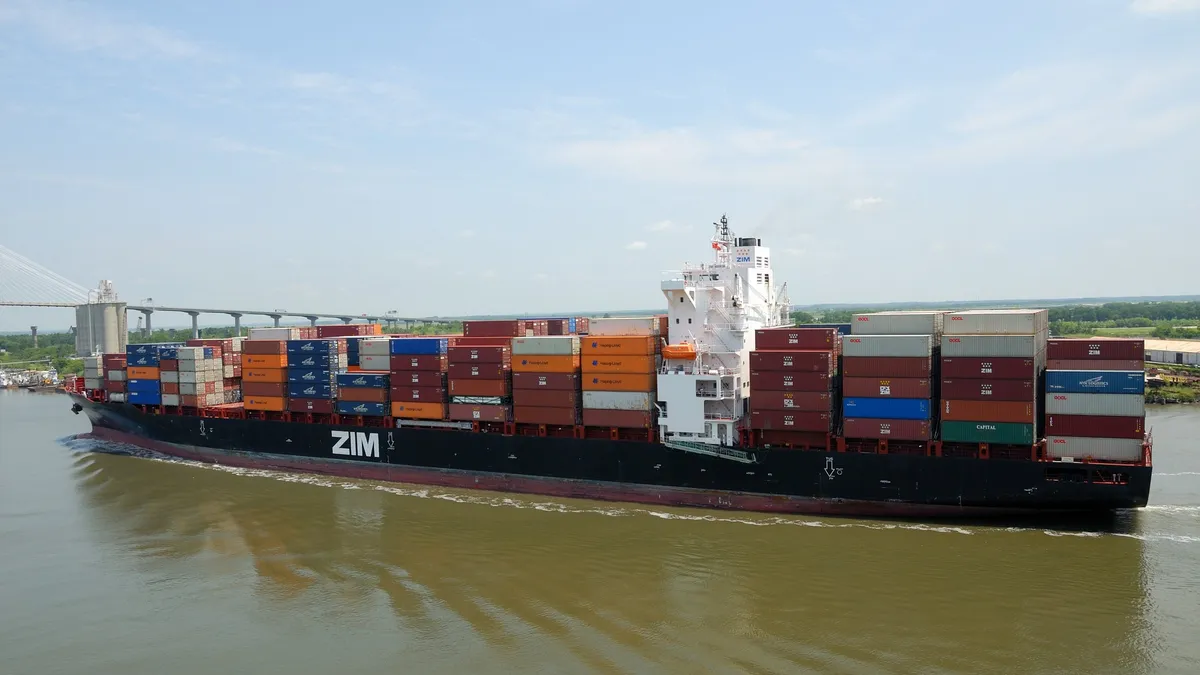Dive Brief:
- Zim's long-term contracts took effect on May 1, and rates are, on average, "slightly above" 50% higher YoY as a result of high demand and equipment shortages, CFO Xavier Destriau said on the company's earnings call.
- High demand meant Zim also had to limit the amount of volume it could commit to shippers, despite the carrier expanding its capacity on Transpacific lanes, Destriau said.
- "When it comes to the rates ... we are very pleased with the outcome of the negotiation we’ve had with our customers," CEO Eli Glickman said. The company expects freight rates to remain elevated throughout 2021, Destriau said.
Dive Insight:
Zim is just the latest carrier to note shippers are seeking new, long-term commitments after a volatile year, during which having a contract was no guarantee for capacity. This resulted in companies, shippers and carriers looking into contracting tools, such as two-way commitments and index-linked rates.
The tools are intended to ensure contracts actually have teeth. And the consensus is that these new contracts have resulted in more costly agreements for shippers.
"Some shippers are reportedly paying double the contracted rates they enjoyed just one year ago," Xeneta CEO Patrik Berglund said in a statement at the end of last month. Xeneta tracks contract rates in the ocean shipping market.
And Maersk said the time horizon that shippers are agreeing to in contracts has also extended. Maersk reported this month that its contract volume is up about 20% YoY, and that includes contracts covering 1 million 40-foot-equivalent units of capacity for a length of 24 months or longer.
"It's actually a number we expect [to be] increasing over the coming months, because we are in [a] number of dialogues with customers right now about converting existing 12-month deals into a multi-year framework," Johan Sigsgaard, head of ocean products at Maersk, said at the company's Capital Market's Day earlier this month.
With demand high and contact rates working in carriers' favor, carriers are working to expand their capacity and bring on more equipment.
Zim noted it was making a $588 million investment in containers to grow its container fleet from about 640,000 TEU as of the end of March 2020 to more than 900,000 TEU by the end of the year. The container-leasing company Triton and carrier Hapag-Lloyd have also made announcements about expanding their equipment fleet in recent weeks.
"From an equipment perspective, it was very important to us to continue to bring in new containers as we are growing quite significantly quarter-over-quarter," Destriau said.














